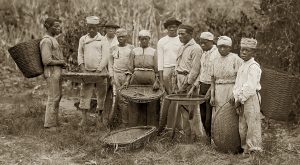Ginetta Candelario is a Dominican-American sociologist who has studied the foundations of feminism in the Dominican Republic for the past seventeen years. The main point that she emphasized was the difference between North American and Dominican feminists. Dominican women were more concerned with autonomy; having rights to divorce, to own property, and to govern their own bodies. Women in the United States were chiefly concerned with suffrage, but this did not matter to the Dominican feministas whose government “elections” consisted of militia-led coup d’états where a vote would not be of much use. North American women would not reach this level of feminism, which is considered Second Wave feminism, until the 1950’s.
After her presentation, we had a question and answer session about both her presentation and her book, Black Behind the Ears (There is more to the name). This book followed transnational Dominican migrants at three key cities and studied their racial self-identification. Those in Washington D.C. more readily identified with their African ancestry, and accepted their blackness. Those in New York held on to anti-black ideologies, in an attempt to separate themselves from African-Americans and how they were treated in America. Those in Santo Domingo also held on to anti-black, but more specifically, anti-Haitian, ideologies due to years of schooling and customs that supported this philosophy. This relates to class in that we studied the roots of anti-blackness/anti-Haitian ideas. We found them to originally be a way to distance the Dominican Republic from the free and black country of Haiti so that international trade would not be deterred.
Concerning the presentation and dinner, Dr. Candelario was eloquent, knowledgeable, and enthusiastic about her work. Her work has already begun to change my perspective and appreciation of my background and identity. However, during the presentation she seemed to be disorganized in how she would flip back-and-forth between slides. Also, she would provide exorbitant amounts of information to answer questions. Besides that, I identify strongly with Dr. Candelario as a Dominican-American woman who is white passing. As a child, I would fill out my race as black and my ethnicity as Hispanic/Latino on standardized tests. As I grew to understand race and ethnicity, I realized I could not identify as black simply because I did not identify as white. Her work has re-opened my own internal conversation of my identity, and I am grateful.

